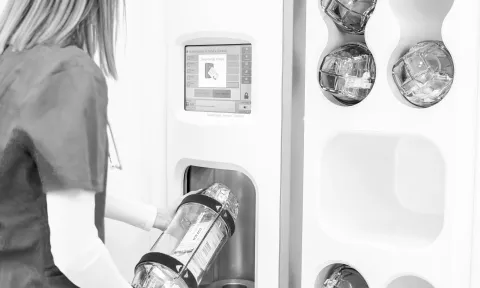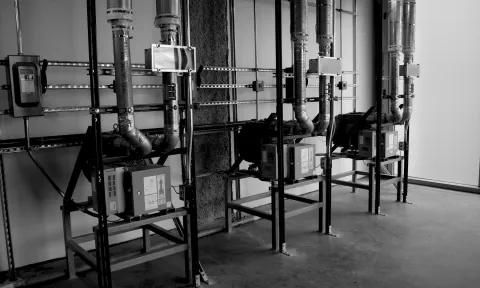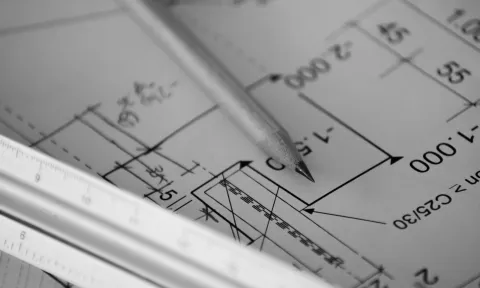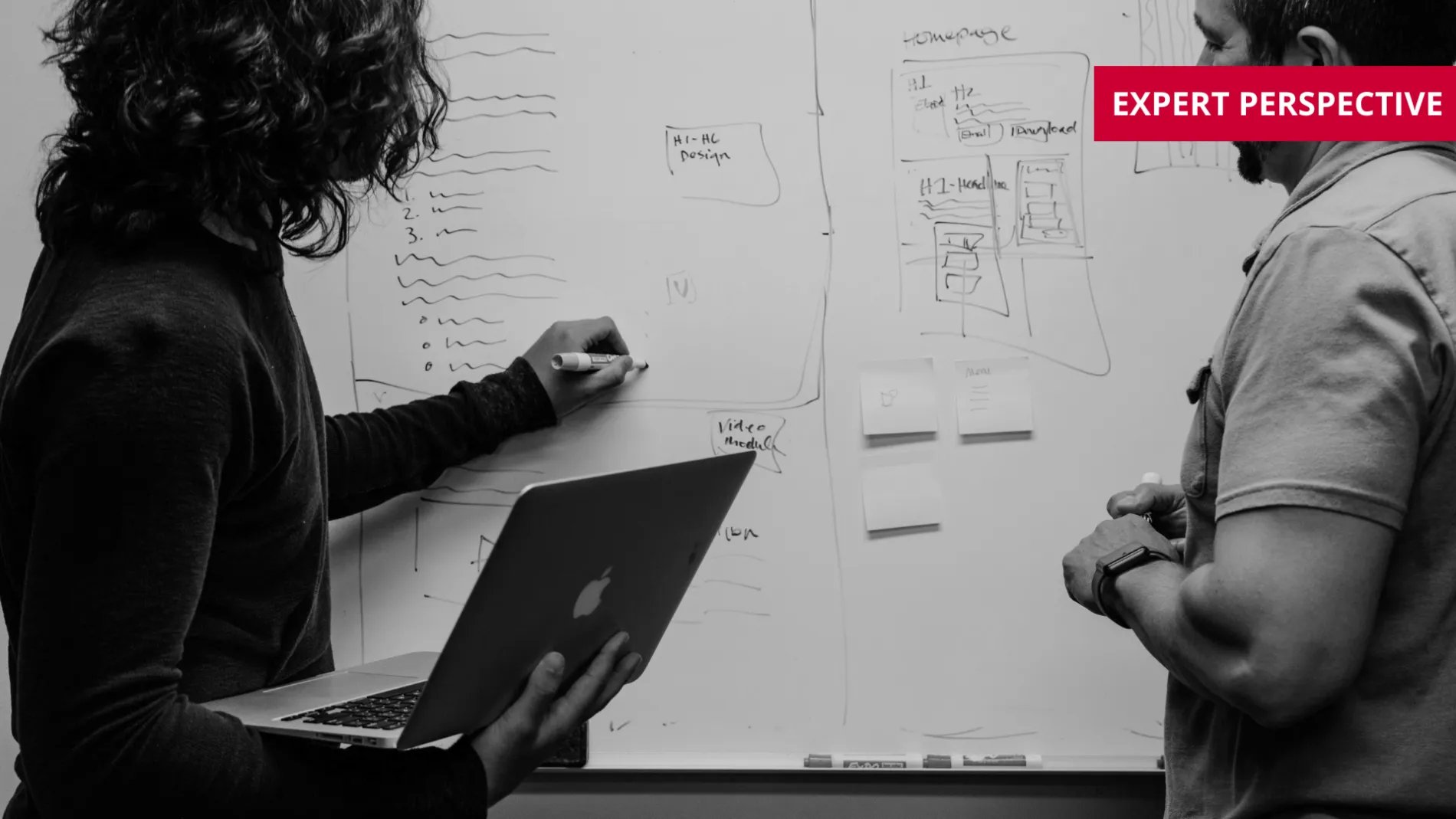You might also be interested in this

Customer Pledge

Superior Transport Automation

Pneumatic Tube System Components

Carriers and Accessories

Stations

TransLogic V8

Delivery Manager Material Tracking Software


A Good Plan Can Help Ensure Success
Reading Time: 5 min.
3/21/2025
Building or expanding a hospital comes with its own unique set of challenges. To say that it requires careful planning, consideration, and coordination might be an understatement. Nonetheless, if you're constructing a new facility from the ground up or expanding an existing one, there are several baseline factors to consider to ensure the project meets the needs of the community, staff, patients, and your bottom line. Here are a few of those critical key factors that you should pay attention to if you’re considering constructing or expanding your healthcare facility:
Before breaking ground, it's essential to conduct a thorough needs assessment and make calculated projections. This involves evaluating the current and future healthcare needs of the community, understanding the hospital's long-term goals, and tailoring the project to fit – or even exceed – these needs.
Leaders should consider factors such as population growth, demographic changes, environmental impacts on local health, local labor markets, infrastructure, and emerging healthcare trends. For instance, Children’s Hospital of Philadelphia leaders are responding to overcrowding challenges by allotting $1.7 billion to construct a new inpatient tower that will add 300 beds – and can add 200 more if needed. The new tower is slated to open in 2027, and the hospital has plans to add three additional buildings to their campus.
Engaging with stakeholders, including healthcare professionals, community members, and local authorities, can provide valuable insights and help refine the plan for a successful implementation.
Hospital construction and expansion projects require careful fiscal planning and accurate projection. Developing a comprehensive budget that includes all potential costs and then some means fewer hurdles when it comes to capital.
This should cover land acquisition, design – including design assist – and construction, materials, equipment, staffing, permitting, and operational expenses. Conducting a cost-benefit analysis can help determine the most cost-effective approach, and could determine whether an existing structure is expanded or a new hospital construction project is initiated.
Not surprisingly, new hospital construction costs can vary based on the type of facility and its location. According to Becker’s Hospital Review here is how the average cost per square foot stacks up in 12 of the United States’ largest locales:
Like many large industries, Hospitals must adhere to strict state-and-federal regulatory requirements and safety standards. At first glance, these regulations cover various aspects, including building codes, fire safety, accessibility, and infection control. However, hospitals also face immense liabilities and regularly go above and beyond to help mitigate risk while protecting patients.
Designing new hospital building to include medication safety zones is a prime example of how forethought during the design process can drastically reduce operational risk later on.
In short, ensuring compliance with these standards is essential to avoid legal issues and ensure the safety of patients and staff.
The design of a hospital plays a critical role in its functionality and efficiency. It's important to create a layout that supports smooth workflows, enhances patient care, and provides a comfortable environment for patients and staff.
Considerations include the placement of departments, ease of navigation, natural lighting, and noise reduction. According to the National Institutes of Health, excessive noise has been shown to elicit a negative physiological response in both patients and hospital staff. By considering noise early in the design process, hospital leaders can create a better hospital environment from the get go.
Sustainability is becoming increasingly important in healthcare facility design. Implementing energy-efficient systems and sustainable building practices can reduce operational costs while minimizing the hospital's environmental impact.
In our blog “Adopting Green Technology Can Give Hospitals an Edge” we found that the University of Pittsburgh Medical Center put energy-saving technologies and programs in place to help them save an estimated $350,000 per year in energy costs.
This includes investing in renewable energy sources, efficient HVAC systems, and sustainable materials. Green building certifications, such as LEED, can provide guidelines and recognition for sustainable practices.
If there’s anything we know from experience, it’s that a well-designed pneumatic tube system can significantly improve hospital operations. The tube system is used to transport small items, such as lab specimens, medications, and medical supplies, quickly and securely throughout the hospital.
The technology has been around for some time, however modern tube systems – with RFID, touch-screen panels, and software controlled hardware – are anything but old-school. Nonetheless, when planning a tube system, consider the following:
Traffic Analysis: Conduct a traffic analysis to determine the volume and frequency of items that will be transported. To do this, TransLogic experts draw on decades of existing customer data and 3d modeling to design systems that are efficient, reliable, easy to maintain, and able to handle peak loads without delays.
Station Placement: Strategically place pneumatic tube system stations in high-traffic areas, such as laboratories, pharmacies, and nursing stations, to minimize transport times.
System Features Reliability: Choose a reliable tube system provider with a proven track record in healthcare settings. Ensure the system includes features like real-time tracking and automated alerts for any issues.
Like a well-designed tube system, early pharmacy automation planning can have a positive impact on future operations. For instance, if hospital leaders should revisit their approach to drug inventorying and distribution and work that into the new design. Key considerations when planning for pharmacy operations include:
Centralized Operations: Consolidated service centers (CSCs) can centralize various pharmacy functions, such as compounding, picking, repackaging, and inventory management, reducing errors and drastically improving efficiency.
Automation Technologies: Implement automation technologies, such as robotic dispensing systems and automated storage and retrieval systems, to enhance accuracy and reduce manual tasks.
Integration with Hospital Systems: Ensure the CSC is integrated with the hospital's tube system for maximum distribution efficiency.
Creating a positive experience for patients and staff is essential for the success of a hospital and can have a physiological impact on patient outcome. Consider factors such as:
Patient Comfort: Design patient rooms and common areas to be comfortable and welcoming. Incorporate elements like natural light, soothing colors, and comfortable furnishings.
Staff Efficiency: Design workspaces that support staff efficiency and well-being. This includes providing adequate break areas, ergonomic workstations, and easy access to necessary resources.
Healthcare is constantly evolving, and hospitals must be designed to adapt to future changes.
Considerations for future-proofing include:
Flexible Spaces: Design spaces that can be easily reconfigured to accommodate new technologies or changes in patient care needs.
Scalability: Plan for potential future expansions by incorporating scalable infrastructure and utilities.
Ongoing Maintenance: Develop a maintenance plan to ensure the hospital remains in good condition and can continue to meet the needs of patients and staff.
Planning a new hospital construction or expansion is a complex process that requires careful consideration of various factors. By conducting thorough strategic planning, ensuring regulatory compliance, integrating advanced technologies, and focusing on patient and staff experience, you can create a facility that meets the needs of the community and provides high-quality care. Incorporating efficient systems like pneumatic tube systems and pharmacy automation via consolidated service centers can further enhance the hospital's operations and contribute to its long-term success.








Contact our knowledgeable specialists to discover how our range of automation solutions can boost efficiency, reduce costs and enhance care at your healthcare facility.
Contact us